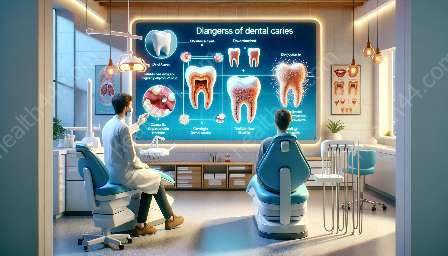Malocclusion refers to the misalignment of teeth, which can have a significant impact on oral health. One of the potential risks associated with malocclusion is an increased likelihood of tooth loss. Understanding the relationship between malocclusion and tooth loss is crucial for maintaining good oral health and preventing potential complications.
Correlation between Malocclusion and Tooth Loss
Malocclusion can lead to various complications that may ultimately result in tooth loss. The misalignment of teeth can cause excessive wear and tear on specific teeth, leading to weakened enamel and an increased risk of decay. Additionally, malocclusion can create pressure points on certain teeth, making them more vulnerable to damage and potential loss over time.
Furthermore, malocclusion can affect the overall structure and function of the jaw, leading to uneven distribution of bite force and potential jaw joint problems. These issues can contribute to tooth mobility and, in severe cases, result in tooth loss. The presence of malocclusion can also impact the stability of surrounding teeth, potentially leading to a domino effect of tooth loss if left untreated.
Effects of Poor Oral Health Due to Malocclusion
Malocclusion not only increases the risk of tooth loss but also has broader implications for overall oral health. Misaligned teeth can create challenges when it comes to maintaining proper oral hygiene, as certain areas may be more difficult to clean effectively. This can lead to an accumulation of plaque and bacteria, increasing the risk of gum disease, which is a leading cause of tooth loss.
Moreover, the presence of malocclusion can contribute to temporomandibular joint (TMJ) disorders, leading to chronic jaw pain, headaches, and discomfort. These conditions can impact an individual's ability to chew and speak properly, affecting their quality of life and overall well-being.
Preventive Measures and Treatment for Malocclusion-Related Tooth Loss
Addressing malocclusion early on through orthodontic intervention can minimize the risk of tooth loss and mitigate the associated oral health challenges. Orthodontic treatments such as braces, aligners, or other corrective interventions can alleviate the misalignment of teeth, reducing the likelihood of excessive wear, decay, and potential tooth loss.
Additionally, maintaining a stringent oral hygiene routine, including regular brushing, flossing, and dental check-ups, is crucial for individuals with malocclusion. Specialized oral care routines may be recommended to ensure thorough cleaning and prevent the buildup of plaque and bacteria in hard-to-reach areas.
Individuals experiencing symptoms of TMJ disorders or jaw pain related to malocclusion should seek the expertise of a dental professional for appropriate diagnosis and treatment. Physical therapy, bite splints, and other therapies may be recommended to alleviate the symptoms and improve jaw function.
Conclusion
Understanding the impact of malocclusion on the risk of tooth loss is essential for individuals to prioritize preventive measures and seek appropriate treatment when necessary. By addressing malocclusion and its effects on oral health, individuals can actively preserve their natural teeth and maintain a healthy, functional smile throughout their lifetime.



